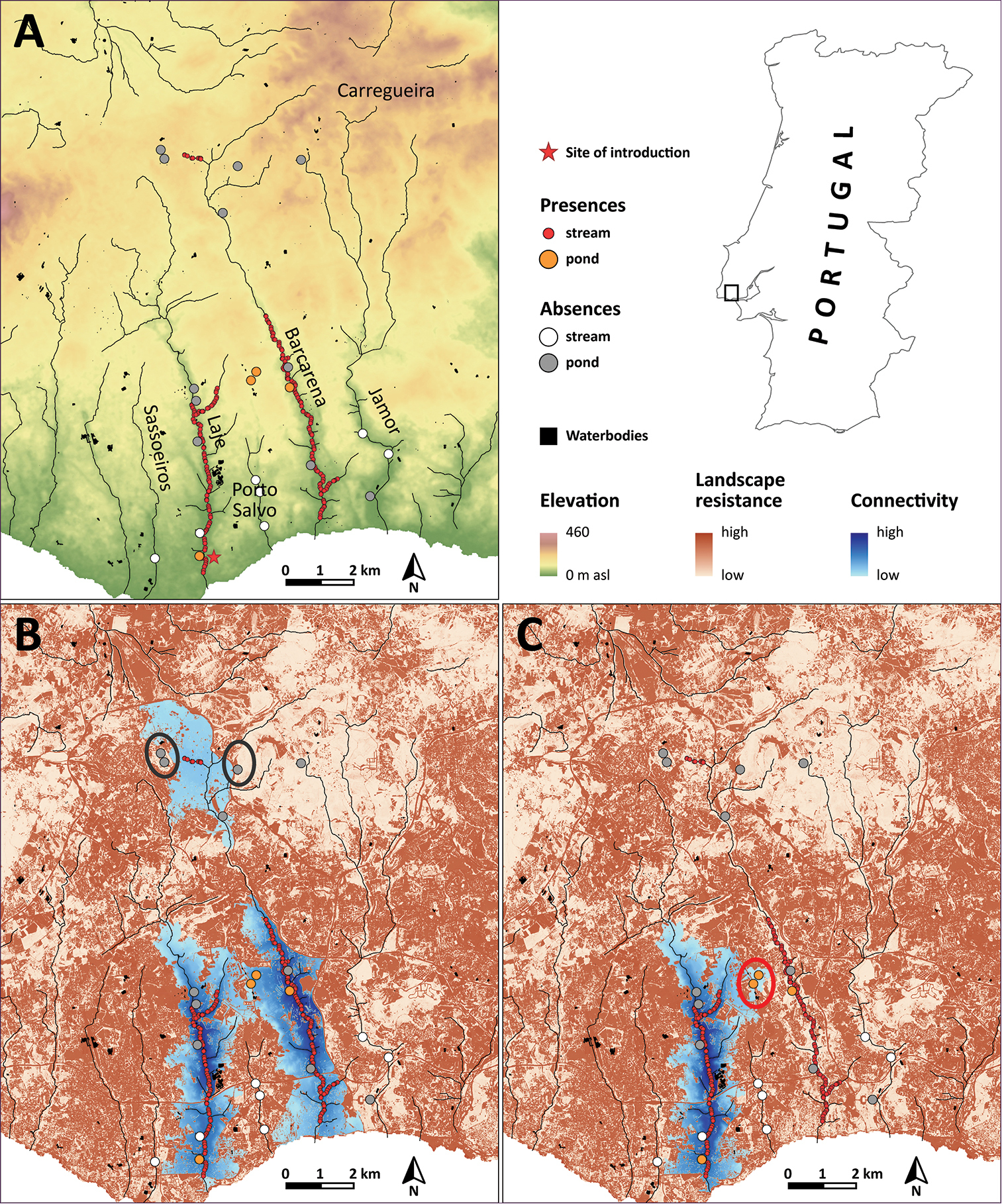
|
||
|
Study area A overview of study area: Elevation and important locations (i.e. the two invaded rivers and other localities that could be threatened by invasion). Features as presence and absence points (streams and ponds), water bodies and the site of introduction are highlighted B areas of low and high risk of invasion: Landscape resistance and the connectivity (including all presences as starting points) of the study area. Features as presence and absence points (streams and ponds) and water bodies are highlighted. Two areas of low but possible risk of invasion are surrounded by black circles C reconstruction of past dispersal from Laje into Barcarena River: Landscape resistance and the connectivity (including only presences from Laje River as starting points) of the study area. Features as presence and absence points (streams and ponds), and water bodies are highlighted. The golf-course ponds, which were used as stepping stones into Barcarena River, are surrounded by a red circle. |